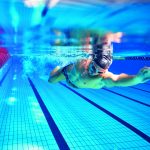From swimming to triathlon: here’s what you need to know
Physical attributes developed after focusing on one specific discipline for years certainly influence how you learn and develop the skills required to train for the other two disciplines, particularly running.
Training for the triathlon does not mean training for three separate disciplines, just one sport. Sometimes that is easier to say than do. The thing you hear most often is: “I am good at swimming, so why should not I big good at riding a bike and running!?”. Unfortunately, that is not the way it works. Physical attributes developed after focusing on one specific discipline for years certainly influence how you learn and develop the skills required to train for the other two disciplines, particularly running.
In triathlon, swimming and biking certainly have certain characteristics in common. For example, both involve concentric muscular movements (i.e. involving the shortening of muscles) rather than eccentric (stretching) movements. Gravity is not a factor in swimming and you have “assisted” motion when riding a bike. So, there are some obvious differences from running and this makes the transition from one discipline to another harder.
1. If you have a background as a swimmer, you should know that swimmers tend to develop their upper bodies more. Work on strengthening their shoulders, deltoids, chest and back is much more important than building muscles in their lower bodies or, in other words, their legs.
2. The fact that swimmers weigh more due to their bigger muscles has a negative impact on VO2 max (maximum oxygen consumption max). Body weight and size affect this factor [1].
3. Swimming makes your muscles work ipsilaterally[2], i.e. “on the same side”. For example, your right shoulder and right arm move the right-hand side of your body when swimming, while the opposite applies to running.
4. Based on what has been noted above (gravity does not affect swimming), you can train longer in the water at high intensities with less risk of injuring your joints and tendons. Due to its mechanical and environmental characteristics, it is easier for runners to get injured if they train too intensively for long periods.
Bearing all this in mind, there would seem to be no simple solution for all those swimmers who want to try the triathlon. In actual fact, that is far from the truth.
The first and most important thing to do is: train, train and train even harder. Only by training consistently and working on your technique will you be able to improve those technical skills you require to prepare properly, even for running.
Secondly, get used to running more often. Focus on regular training (even every day) rather than long sessions. The best runners are those who run a lot (meaning frequently!). And do not improvise, organise your runs properly. Running can cause serious injuries unless you follow a proper training plan.
Thirdly, work on your muscular endurance. Make sure you include strides or changes of pace in your training sessions. It is important to get your muscles used to working at race pace, even just for short distances. It just takes a few 100-metre or 30-second reps followed by short jogs to recover. You can even try uphill running. It is certainly harder but has a notable training effect. The advice given above applies here too: never improvise!
If you have decided to focus on triathlon, there are two words you need to get into your head that will become your own personal mantra: exertion and consistency.
References:
Swimming Anatomy, Ian McLEod, Calzetti Mariucci Editori
http://www.albanesi.it/corsa/ciclismo.html
https://the5krunner.com/2015/01/21/muscle-groups-used-in-triathlon-swimming-cycling-running/
[1] http://www.my-personaltrainer.it/VO2MAX.html
[2] http://www.sapere.it/enciclopedia/ipsilaterale.html
Written by:
arena coaches
Swim coaches, trainers and experts will give you all kinds of tips for performing at your best in both training and races.







